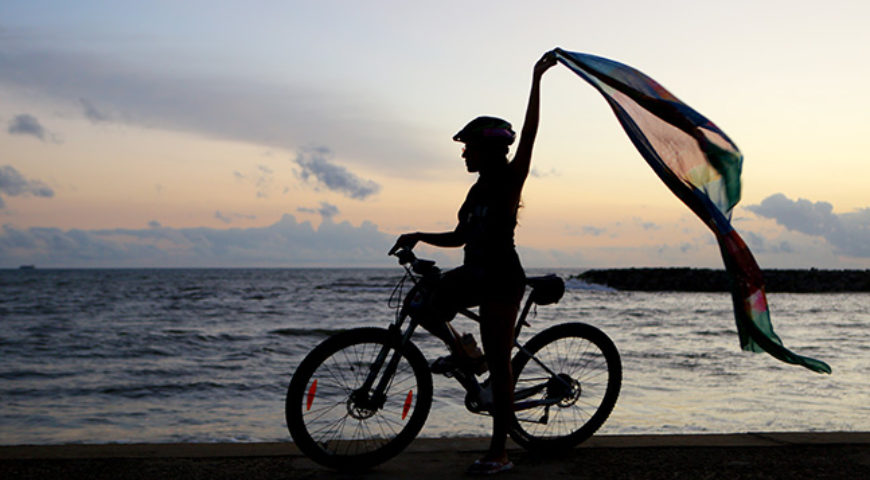
Where roses bloom: In Conversation with Vamini Sethi
Her eyes suddenly glaze over – you can see her reminiscing about that overwhelming moment when she tells us, “After reaching there, I just looked her in the eye (referring to a lady officer, her trek-mate) and I said – Dude it’s done! And we both had tears and we just hugged, so that was a moment you know you’ll remember for the rest of your life”. We can understand why. After all, being the only woman civilian to successfully complete this year’s annual Siachen Civilian Trek in September 2016, while simultaneously juggling a corporate job and a family is not an easy feat.
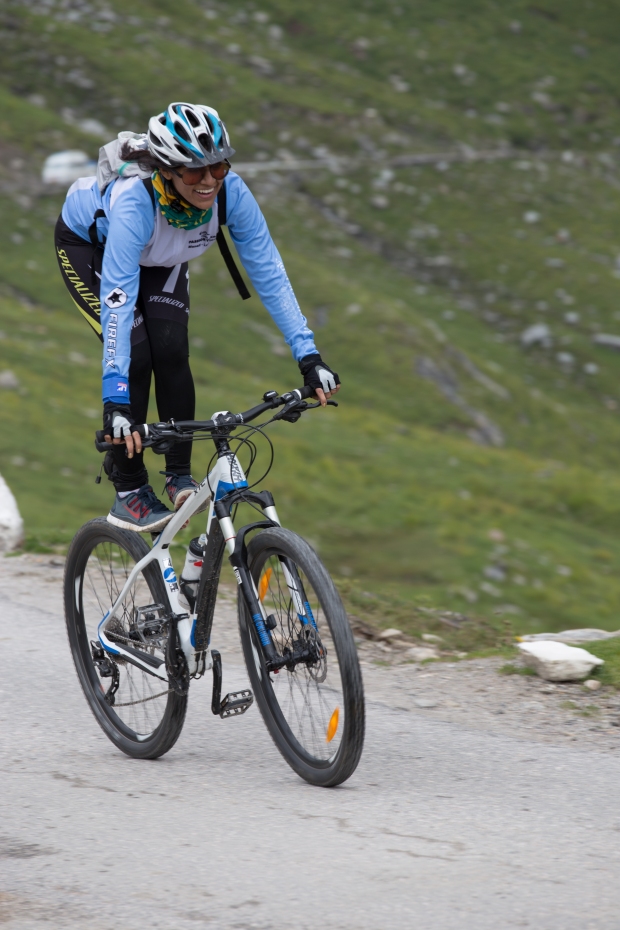
The Siachen Glacier is the world’s highest and one of the most treacherous battlegrounds; and the landscape is the most barren you will ever see. The Indian Army survives for months on the icy ground, braving extreme weather conditions and bone-chilling temperatures to keep the borders safe. Every year between August and September, the Indian Army’s Adventure Wing organises this trek to give civilians a taste of Army life and to see what they do on a daily basis. Vamini Sethi, a Mumbai-based banker by profession and an avid adventure sportsperson, was the only woman civilian this year to complete the month-long 120 km trek (60km both ways) this year. We caught up with her one quiet afternoon and she was gracious enough to talk to us and recount her experiences in the field of adventure travel and of course, her trailblazing trek across the Siachen Glacier.
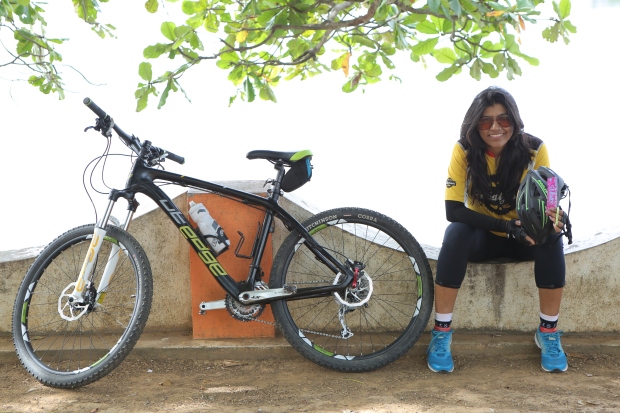
We ask her about her early brush with the ‘Great Outdoors’. Vamini always loved riding as a child but never thought of taking it up seriously until 2011, when she participated in a cyclathon in Delhi where she was based earlier. A chance meeting with a group of cyclists left her mesmerized; she was instantly drawn to their state-of-the-art bikes and fancy helmets. Three months later, armed with her first professional bike (albeit to the chagrin of her mother), she enrolled in her first 35-km mountain bike race. Much to her surprise, she placed second and received a whole host of mementos: a certificate, trophy, cash prizes, and gift vouchers…the works. This spurred her to take up biking professionally. After traversing a few long distance routes on her cycle, she participated in the mountain races MTB Shimla and MTB Himalaya in the following years with a podium finish. It was a year of achievements for her.
“For somebody who’s always been in a corporate and hasn’t seen the life outside, it was interesting to suddenly venture into this world where there are so many people, and everybody is so happy and satisfied with what they are doing, because the satisfaction that comes from within when you challenge yourself and you come out accomplished, is completely different, vis-à-vis what you get at work”, she thoughtfully says.
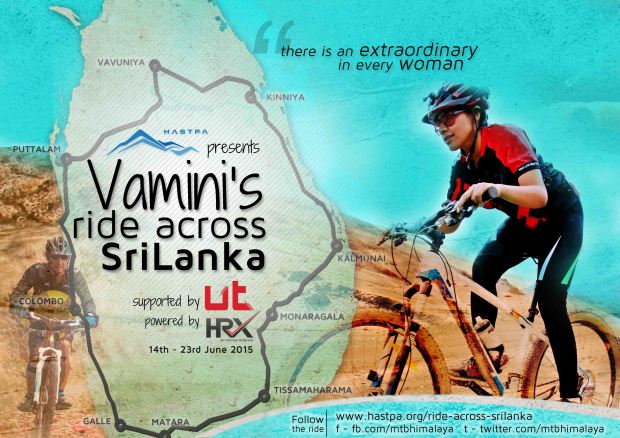
After that defining race, she started riding and trekking extensively and it was then that she hit upon the idea of biking from Lhasa to Kathmandu via the Everest Base Camp to ring in her 30th birthday. She wanted to make it count, she says, having been an adventure sports aficionado for long. But after a chance avalanche in the Everest region foiled her biking plans – she was undaunted. An impromptu 9-day biking trip along the Sri Lankan coastline earned her a place in the Limca Book of Records! She practically lights up as she talks about the time she received that fateful call informing her of her record, “And that time I was sitting in a conference and I was like “really?” And everyone was just looking at me and I said “Sorry, but I’m a Limca record holder now”. So then I came out, I said you’ve reviewed my application already? He (the Limca official who spoke to her) said we just thought we’d make your 30th special.” She says that Limca usually takes 3 months for application review, but by a stroke of sheer luck hers was reviewed in only 7 days!
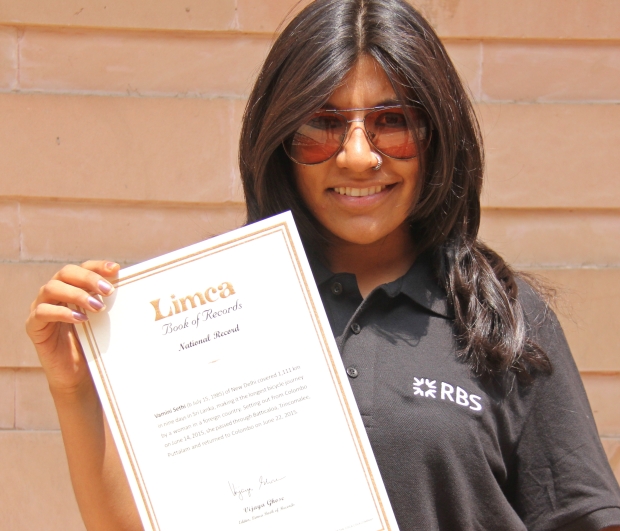
With her Limca Book of World Records Certificate
Talking about her trip to the Siachen Glacier, she heard about it from a friend and was fascinated by it. But it had been a long and arduous path for her to crack the application. She was finally selected in 2016 after having continuously applied every year since 2012, since it is a one-month long trek and no prior notice about selection is given. Adjusting official leaves pose another problem; and getting selected itself is not easy task. Out of 2000 to 3000 applications, only 20 or 30 applicants make the cut. One can see how badly she wanted to accomplish this, so naturally when she was selected, she began training for it with full gusto.
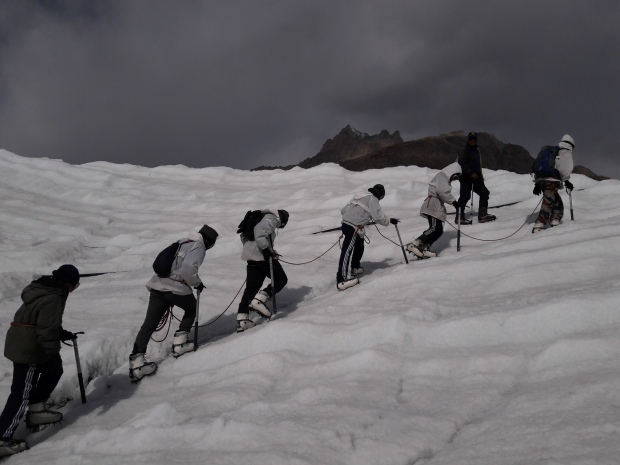
Trekking across the Siachen Glacier
The Siachen Civilian Trek is a 9-day affair after two and a half weeks of training – a veritable sea of fire to cross! The trek is divided into 4 phases, each one covering 12km, 14km, 16km and 18km respectively. It is not like regular treks with comfortable campsites, since this is the Indian Army and they do not treat you like a civilian. The ground is hard ice and a sea of moraines and crevasses. She talks about the many hardships they had to face – wearing heavy uncomfortable Scarpa snowshoes, carrying backpacks, ice axes and coiled ropes in additional to wearing protective gear. Wearing protective goggles over her spectacles proved to be another nuisance. Reminiscing about the Army’s training she tells us how tough-as-nails they are; how they refuse to take no for an answer. “They’ll completely forget that you’re from a civilian world”, she says. We gasp intermittently as she narrates tales of life on the Siachen glacier. She says they would get just one break a day since they were constantly walking. They couldn’t stop for things like retying undone shoelaces or using the bathroom, since the whole group had to stop if even a single person stopped. Even things like moving from one tent to the other were a task. A shin injury due to her heavy snowshoes brought her much misery; but as she says, dropping out was not an option.
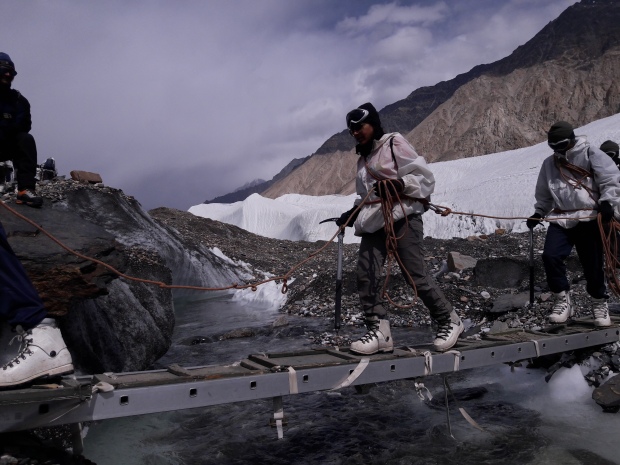
She trained hard for this trek. “It was a combination of nutrition, strength, core and climbing,” she informs us. “That’s how I trained. I just got 1 month to do it. It’s a very tough training, if you haven’t trained yourself before coming, it’ll become a pain: you will not enjoy their training. So it’s very important that you are physically fit before you go there, before you start training with them, because their level is totally different. Whatever you do, you have to double yourself up before going there; and that’s the fitness they expect from you.” She got her nutrition, exercise and sleep in shipshape condition before attempting this.
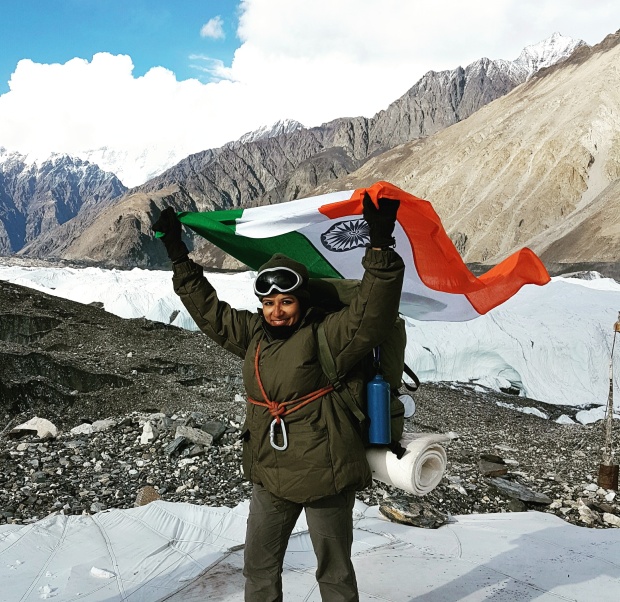
Finally!
We were amazed, listening to her regale us with stories from the world’s highest battleground. How does she get the inspiration to do what she does? “I think it’s all about believing in yourself,” she says. “Before I started all this, I would see a lot of people do a lot of things and I would always wonder how do they do it. When I did it, I figured that I don’t have anything special. I’m not made of steel. It’s all about believing in yourself – challenging yourself to be able to do it. I personally feel that there is an extraordinary in every woman. She needs to realise her potential and keep pushing. One more principle that I go by is – always finish what you started, unless of course there is a major problem.” These are some truly inspirational words…suddenly we feel lucky to be sitting there and talking to her.
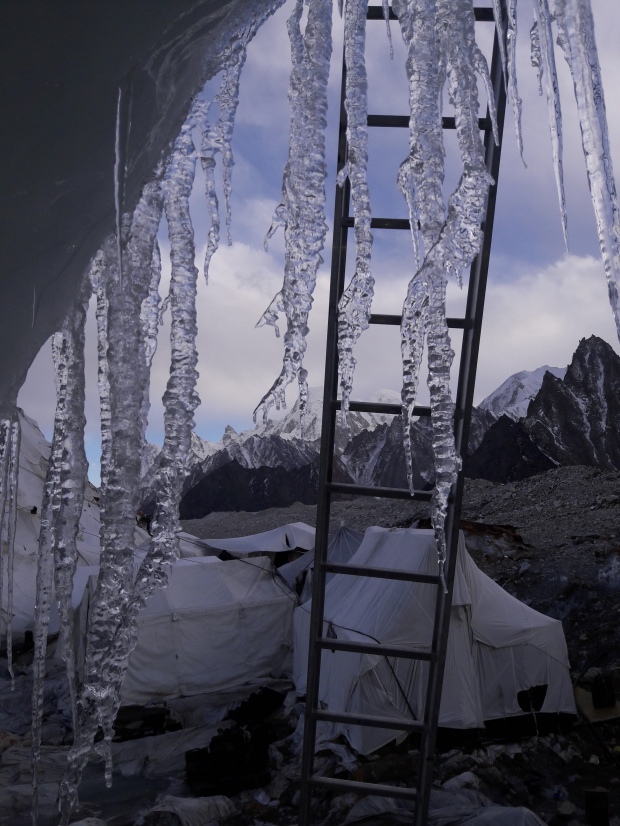
Camping on the glacier
She recounts the time she made friends with a trek mate of hers, a lady officer with whom she initially did not get along too well because of their conflicting civilian and army backgrounds. Later, daily heart-to-heart conversations brought them closer and when they managed to get to the top, the tears flowed freely at the relief at having finally got there and of course at the monumental joy of finishing the trek after the gruelling schedule. A heartwarming anecdote was when they both read one half of a book Vamini had carried along with her and how she gifted another copy to her new friend – with a long note saying one must finish what one has started.
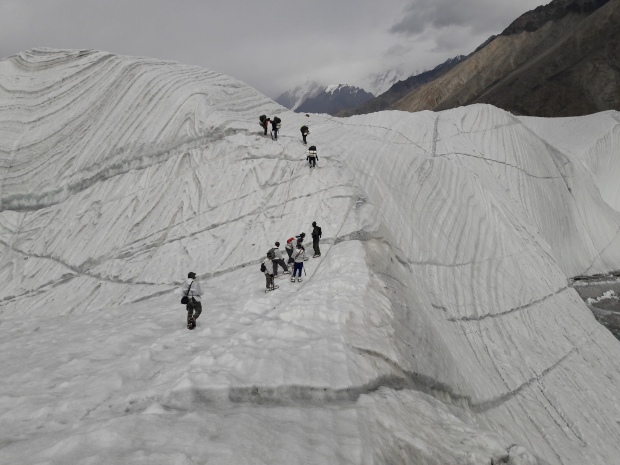
Vamini attributes an extremely supportive husband and family to the success of her various forays into adventure. “My parents have been very encouraging. One very important thing for doing things like this is parents, and if you’re married, then husband, your in-laws, they have to be very supportive. If you unfortunately land up in a family where your in-laws are not supportive, there’s no way you can do things like this”, says she. Her parents were extremely worried during the time she was on Siachen because of the then unrest in Kashmir. Her mother initially refused to let her go. But as they say, all’s well that ends well! And here she was, completely unharmed, with yet another feather in her cap.
“What next?” we ask. “Sometimes, at some point of time I want to rest, take a step back and do things which everybody is doing. I want to keep riding. My aim is to cover the Asian countries on my cycle”, she says, mentioning that competitive racing leaves no time for appreciating the beauty of the surroundings. We think it won’t be long before she is already in the Guinness Book of World Records, considering the breakneck speed she is going at!
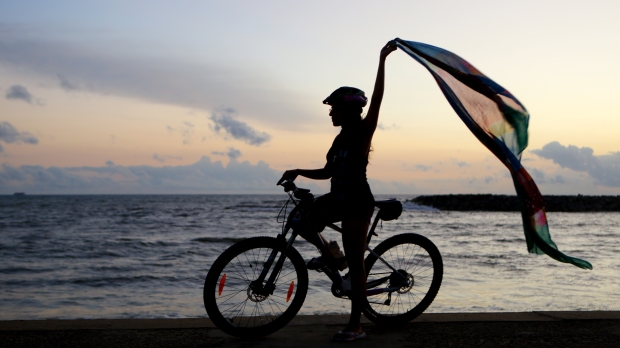
In the local Balti language, “Sia” is a kind of rose that grows in these regions and “chun” means anything that is found in abundance; thus giving birth to the name “Siachen”. We hardly think this is an apt name for the world’s highest battleground, with a largely barren and monochromatic landscape for miles and miles together. But roses do bloom here: roses of courage, valour and sacrifice; and of tales like Vamini’s, who is a true inspiration.
